#Indian Space Research Organization 2023
Text
ISRO Recruitment 2023
ISRO Recruitment 2023 : इंडियन स्पेस रिसर्च ऑर्गेनाइजेशन (इसरो) ने 526 पदों पर नई भर्ती का नोटिफिकेशन जरी किया है l इसरो भर्ती 2023 के लिए ऑनलाइन आवेदन 20 दिसंबर 2022 से 9 जनवरी 2023 तक कर सकते है और आवेदन शुक्ल जमा करवाने की अंतिम तिथि 11 जनवरी 2023 तक रखी गई है l
इसरो भर्ती 2023 के तहत असिस्टेंट, जूनियर पर्सनल असिस्टेंट, अप्पर डिवीज़न क्लर्क, स्टेनोग्राफर, पर्सनल असिस्टेंट सहित कई पदों पर भर्ती…
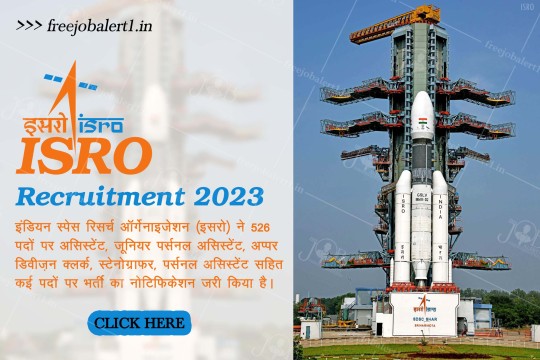
View On WordPress
#Indian Space Research Organization 2023#Indian Space Research Organization Recruitment 2023#Indian Space Research Organization Vacancy 2023#ISRO Recruitment 2023#ISRO Vacancy 2023#इंडियन स्पेस रिसर्च ऑर्गेनाइजेशन भर्ती 2023#इसरो भर्ती 2023
0 notes
Text
IS THE MOON RUSTING??
Blog#309
Wednesday, June 28th, 2023
Welcome back,
While our Moon is airless, research indicates the presence of hematite, a form of rust that normally requires oxygen and water. That has scientists puzzled.
Mars has long been known for its rust. Iron on its surface, combined with water and oxygen from the ancient past, give the Red Planet its hue. But scientists were recently surprised to find evidence that our airless Moon has rust on it as well.

A new paper in Science Advances reviews data from the Indian Space Research Organization's Chandrayaan-1 orbiter, which discovered water ice and mapped out a variety of minerals while surveying the Moon's surface in 2008. Lead author Shuai Li of the University of Hawaii has studied that water extensively in data from Chandrayaan-1's Moon Mineralogy Mapper instrument, or M3, which was built by NASA's Jet Propulsion Laboratory in Southern California. Water interacts with rock to produce a diversity of minerals, and M3 detected spectra - or light reflected off surfaces - that revealed the Moon's poles had a very different composition than the rest of it.
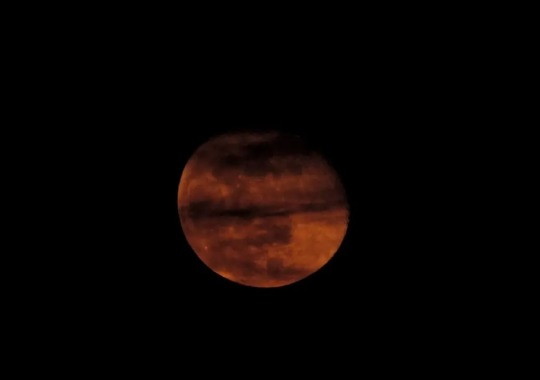
Intrigued, Li homed in on these polar spectra. While the Moon's surface is littered with iron-rich rocks, he nevertheless was surprised to find a close match with the spectral signature of hematite. The mineral is a form of iron oxide, or rust, produced when iron is exposed to oxygen and water. But the Moon isn't supposed to have oxygen or liquid water, so how can it be rusting?
The mystery starts with the solar wind, a stream of charged particles that flows out from the Sun, bombarding Earth and the Moon with hydrogen.

Hydrogen makes it harder for hematite to form. It's what is known as a reducer, meaning it adds electrons to the materials it interacts with. That's the opposite of what is needed to make hematite: For iron to rust, it requires an oxidizer, which removes electrons. And while the Earth has a magnetic field shielding it from this hydrogen, the Moon does not.
"It's very puzzling," Li said. "The Moon is a terrible environment for hematite to form in." So he turned to JPL scientists Abigail Fraeman and Vivian Sun to help poke at M3's data and confirm his discovery of hematite.
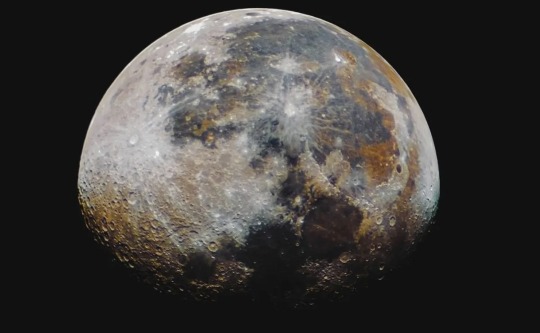
"At first, I totally didn't believe it. It shouldn't exist based on the conditions present on the Moon," Fraeman said. "But since we discovered water on the Moon, people have been speculating that there could be a greater variety of minerals than we realize if that water had reacted with rocks."
After taking a close look, Fraeman and Sun became convinced M3's data does indeed indicate the presence of hematite at the lunar poles. "In the end, the spectra were convincingly hematite-bearing, and there needed to be an explanation for why it's on the Moon," Sun said.
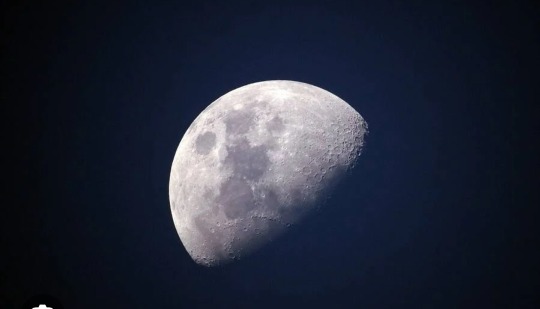
Their paper offers a three-pronged model to explain how rust might form in such an environment. For starters, while the Moon lacks an atmosphere, it is in fact home to trace amounts of oxygen. The source of that oxygen: our planet.
Earth's magnetic field trails behind the planet like a windsock. In 2007, Japan's Kaguya orbiter discovered that oxygen from Earth's upper atmosphere can hitch a ride on this trailing magnetotail, as it's officially known, traveling the 239,000 miles (385,00 kilometers) to the Moon.
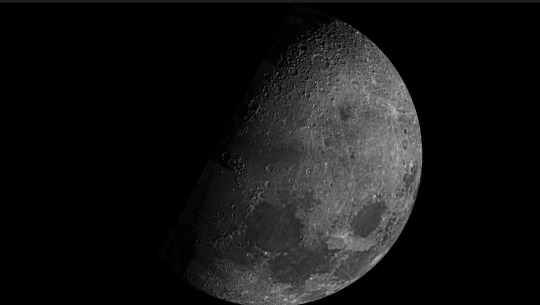
That discovery fits with data from M3, which found more hematite on the Moon's Earth-facing near side than on its far side. "This suggested that Earth's oxygen could be driving the formation of hematite," Li said. The Moon has been inching away from Earth for billions of years, so it's also possible that more oxygen hopped across this rift when the two were closer in the ancient past.
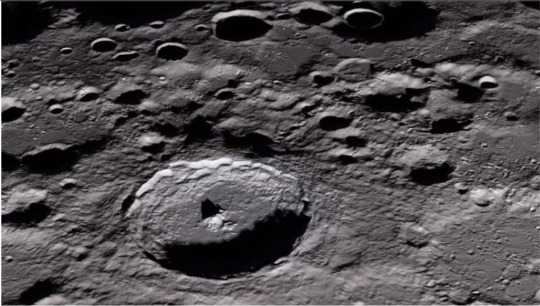
Then there's the matter of all that hydrogen being delivered by the solar wind. As a reducer, hydrogen should prevent oxidation from occurring.
But Earth's magnetotail has a mediating effect. Besides ferrying oxygen to the Moon from our home planet, it also blocks over 99% of the solar wind during certain periods of the Moon's orbit (specifically, whenever it's in the full Moon phase). That opens occasional windows during the lunar cycle when rust can form.
Originally published on NASA.gov
COMING UP!!
(Saturday, July 1st, 2023)
"WHAT IS TIME DISTORTION??"
#atmosphere#astronomy#outer space#alternate universe#astrophysics#universe#spacecraft#white universe#space#parallel universe#astrophotography#moon#rusty moon
206 notes
·
View notes
Photo

2023 July 19
Chandrayaan-3 Launches to the Moon
Image Credit & Copyright: Sruthi Suresh (Space Group)
Explanation: Birds don't fly this high. Airplanes don't go this fast. The Statue of Liberty weighs less. No species other than human can even comprehend what is going on, nor could any human just a millennium ago. The launch of a rocket bound for space is an event that inspires awe and challenges description. Pictured here last week, the Indian Space Research Organization's LVM3 rocket blasted off from the Satish Dhawan Space Centre on Sriharikota Island, India. From a standing start, the 600,000+ kilogram rocket ship lifted the massive Chandrayaan-3 off the Earth. The Chandrayaan-3 mission is scheduled to reach the Moon in late August and land a robotic rover near the lunar South Pole. Rockets bound for space are now launched from somewhere on Earth every few days.
∞ Source: apod.nasa.gov/apod/ap230719.html
92 notes
·
View notes
Text
Only days after a simular Russian mission failed crashing into the lunar surface, India became only the 4th country in history to land on the moon and the first to land on the South Pole. On August 23, 2023, the ISRO (Indian Space Research Organization) landed the Chandrayaan 3 (Chandrayaan is translated from moon vehichle in Hindi Sanskrit) on the moon to perform experiments on the little known and rough terrained area. (Space Exploration, Real Life Event)
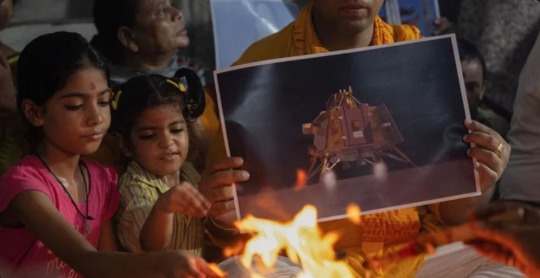
#nerds yearbook#real life event#the moon#august#2023#lunar#space exploration#india#the south pole#isro#chandrayaan3
24 notes
·
View notes
Text
India has landed on the Moon!!! The landing is part of the Indian Space Research Organisation (ISRO)'s historic Chandrayaan-3 mission.
"'We have achieved soft landing on the moon,'" said ISRO Chairman Shri Somanath. 'Yes, on the moon!'"
"[Indian Prime Minister Narenda Modi] then addressed the ISRO team, speaking in Hindi but adding in English, 'India is now on the moon!'
'The success belongs to all of humanity,' he said. 'And it will help moon missions by other countries in the future. I'm confident that all countries in the world ... can all aspire for the moon and beyond. ... The sky is not the limit!'"
The remote operated lander named Vikram touched down in the south pole region at 6:02pm IST on August 23, 2023. Vikram carried a small but mighty companion, the lunar rover Pragyan (Sanskrit, "wisdom").
Vikram is named after Vikram Sarabhai, PhD, physicist, astronomer, and a major figure in the development of India's space and nuclear programs. Sarabhai served as the first chairman of the ISRO, as well as the driving force behind the organization's creation. Recognizing the need for more coordinated space research in India, Sarabhai urged the Indian government to create INCOSPAR - the committee that eventually formed the ISRO in 1969.
#india moon mission#indian space research organisation#chandrayaan3#ISRO#chandrayaan-3#vikram lander#India moon landing#pragyan rover#Vikram Sarabhai
14 notes
·
View notes
Text
Chandrayaan-3: India's Historic Soft Landing on the Moon
Introduction
On August 23, 2023, India made history by successfully landing the Chandrayaan-3 spacecraft on the Moon’s South Pole. This was India’s third lunar mission, and its first soft landing since Chandrayaan-2 in 2019. The successful landing of Chandrayaan-3 is a major achievement for the Indian Space Research Organization (ISRO) and a significant step forward for India’s space…
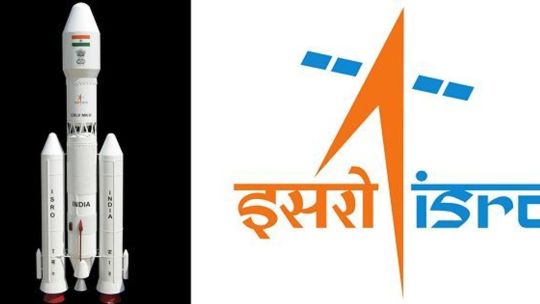
View On WordPress
#Chandrayaan-3#Chandrayaan-3 mission#India&039;s soft landing on Moon#Indian Space Research Organisation (ISRO)#lunar mission#Moon&039;s South Pole#Pragyan rover#scientific instruments#space exploration#Vikram lander
2 notes
·
View notes
Text
The ongoing most talk-of-the-town project that India has been successful in accomplishing is the launch of Chandrayaan-III on the 14th of July,2023. The Indian Space Research Organization has been working tirelessly round the clock for the third attempt of the landing of a satellite on the moon. The second one, most unfortunately, though have made a successful landing on the lunar body was not able to send any useful data our way because of damage due to landing impact. This is the reason why India attempts to make a soft landing, making it the fourth country after USA, China and the former Soviet Union to be able to do so, if successful. The satellite is aboard the heavy-lift LVM3-M4 rocket and took off from the Satish Dhawan Space Centre in Andhra's Sriharikota. Thousands of cheering citizens gathered to watch this historic milestone in India's space research and millions more tuned in live from television. The journey from Earth to moon is estimated of about a month with the landing date expected on August 23. Technicalities, however might postpone or prepone the landing. The satellite is designed to operate for a single lunar day, which is 14 Earth days thus giving ISRO Bengaluru scientists ample time to study the surface of this remarkable lunar body. The satellite is equipped with a lander, rover and a propulsion module and has an impressive weight of 3900 kilograms. Spanning a distance of 300,000 kilometers, it is said to reach the moon in the coming weeks.
India's space research has been highly significant in the past years with the mission to Mars raising our reputation in the world of planets for all eternity. Being the first nation to reach Mars in the very first attempt with a limited budget and continual criticism in tow, we have long earned our respect in the field. The might of the country and its citizens stands behind ISRO's attempt to take us even further in line and wish it all the very best for a successful landing on the moon.
2 notes
·
View notes
Text
How can we inspire young minds to engage with the active developments in Indian space technology?

On August 23, 2023, India became the fourth country to land on the moon and the first to reach its southern polar region. In recognition of this historic achievement, the Government of India and the Indian Space Research Organization (ISRO) will observe August 23, 2024, as its maiden “National Space Day.”
Honoring this, Alliance University will be hosting a series of competitions — space art, debate, model making, robotics, and more — for school students between grades VIII and XII across India.
As the Chief Guest, Ms. Pallavi Mohapatra, retired Helicopter Pilot from the Indian Air Force and the first woman in India to live fire a missile — Akash — will inspire the next generation of space enthusiasts as India advances towards self-reliance and innovation in space technology, in line with ‘Atmanirbhar Bharat.’
To register: https://www.alliance.edu.in/au-events/national-space-day-cosmic-quest/
#isro#isroindia#india#research#space#outer space#planets#space technology#technology#National Space Day#Cosmic Quest#Cosmos#universe#Alliance University
1 note
·
View note
Text
International Conservation Tech in India
Written By: Jagriti S.

Figure: Growth of Conservation Tech Investment 2017 - 2023
The Role of Technology in Conservation

Figure: Remote and Camera Sensing
Drones and Remote Sensing:

Figure: Artificial Intelligence and Machine Learning Conservation
Artificial Intelligence and Machine Learning:
Genetic Technologies:
International Collaborations and Initiatives
The integration of international conservation technology in India is often facilitated through global partnerships and collaborative initiatives. Some notable examples include:
Wildlife Protection Solutions (WPS): This international organization collaborates with Indian conservationists to implement advanced surveillance systems in protected areas. WPS's technology helps in real-time monitoring of poaching activities, leading to quicker response times and increased arrest rates of poachers.
Global Tiger Forum (GTF): India, home to over 70% of the world's tigers, is a key player in the GTF. This international consortium uses technology to monitor tiger populations, track their movements across borders, and implement anti-poaching measures. Satellite telemetry and camera traps are essential tools in these efforts.
Indo-UK Collaboration on Climate Resilience: This partnership focuses on using climate modeling and data analytics to enhance India's ability to predict and respond to climate change impacts. These technologies aid in developing conservation strategies for climate-vulnerable species and habitats.
Case Studies of Success
Several projects in India have successfully harnessed international conservation technology to achieve remarkable results:
Project Elephant: In collaboration with international researchers, Project Elephant uses GPS collars and drone technology to track elephant herds and mitigate human-elephant conflicts. This initiative has significantly reduced crop damage and human casualties in conflict-prone areas.
Sundarbans Mangrove Restoration: Partnering with global environmental organizations, India is using satellite imagery and GIS (Geographic Information Systems) to map and restore degraded mangrove forests in the Sundarbans. These efforts are crucial for protecting this unique ecosystem and its iconic species like the Bengal tiger.
Snow Leopard Conservation: In the high-altitude regions of the Himalayas, international conservationists are using camera traps, genetic sampling, and satellite collars to study and protect the elusive snow leopard. These technologies provide valuable insights into their behavior, habitat use, and threats.

Figure: Growth of Conservation Tech Investment in India 2016-2023
Here are some notable foreign startups and organizations operating in the conservation technology space in India:
Wildlife Protection Solutions (WPS)
Country of Origin: USA
Focus: Provides technology solutions for wildlife conservation, including real-time surveillance systems to monitor and prevent poaching activities.
EarthRanger (formerly Vulcan Technologies)
Country of Origin: USA
Focus: Offers a data visualization and analysis software platform to support wildlife conservation and protected area management.
Rainforest Connection (RFCx)
Country of Origin: USA
Focus: Uses recycled cell phones as solar-powered listening devices to detect and monitor illegal logging and poaching activities in real-time.
SMART (Spatial Monitoring and Reporting Tool)
Elephant Listening Project (ELP)
Country of Origin: USA
Focus: Uses acoustic monitoring to study and protect elephants, particularly in forest environments where visual monitoring is challenging.
Global Forest Watch (GFW)
Country of Origin: USA
Focus: An online platform that provides near-real-time data and tools for monitoring forests worldwide, helping to detect deforestation and illegal activities.
ZSL Instant Detect
Country of Origin: UK
Focus: Provides a satellite-connected camera trap system that sends real-time images and alerts to conservationists to prevent poaching and monitor wildlife.
Fauna & Flora International (FFI)
Country of Origin: UK
Focus: Engages in various conservation technology projects, including habitat mapping, wildlife monitoring, and anti-poaching initiatives.
Blue Ventures
Country of Origin: UK
Focus: Uses technology to support marine conservation, including community-based monitoring of marine biodiversity and fisheries.
Conservation Drones
Country of Origin: Singapore
Focus: Develops and deploys low-cost drones for various conservation applications, including wildlife monitoring, habitat mapping, and anti-poaching efforts.
Challenges and Future Prospects
While international conservation technology offers immense potential, it also presents challenges:
High Costs: Advanced technologies can be expensive to procure, deploy, and maintain, which can strain the budgets of conservation organizations.
Technical Expertise: Effective use of these technologies requires specialized knowledge and skills. Training local conservationists and researchers is essential for long-term success.
Data Management: The large volumes of data generated by these technologies need to be effectively managed, analyzed, and utilized for conservation planning.
Despite these challenges, the future of conservation technology in India looks promising. Continued international collaboration, investment in capacity building, and innovation in affordable and scalable technologies will play a crucial role in safeguarding India's biodiversity.
Here are some notable Indian startups and companies involved in conservation technology in India:
Wildlife Acoustics: This US-based company has a strong presence in India, providing acoustic monitoring technologies to researchers, conservationists, and protected area managers. Their Song Meter recorders and EcoNet software help track wildlife populations, monitor biodiversity, and assess the effectiveness of conservation efforts.
Kheyti: This Indian startup uses satellite imagery, machine learning, and big data analytics to provide farmers with information on soil health, crop health, and water availability. This information can help farmers improve their agricultural practices and reduce their environmental impact.
Waycool: This Indian company builds and operates a network of cold chain facilities that help farmers store and transport their produce more efficiently. This reduces food spoilage and waste, which is a major environmental problem.
Ecodit Technologies: This Bengaluru-based startup uses AI and machine learning to monitor forests and detect illegal activities such as deforestation and poaching. Their cloud-based platform provides real-time insights to forest departments and conservation NGOs, helping them to better protect India's natural resources.
Conclusion
International conservation technology is transforming the landscape of environmental conservation in India. By embracing these advanced tools and fostering global partnerships, India is making significant strides in protecting its unique ecosystems and wildlife. As these technologies continue to evolve, they offer hope for a sustainable future where nature and humanity can coexist harmoniously.
About Global Launch Base:
Global Launch Base helps international startups expand in India. Our services include market research, validation through surveys, developing a network, building partnerships, fundraising, and strategy revenue growth. Get in touch to learn more about us.
Contact Info:
Website: www.globallaunchbase.com
LinkedIn: https://www.linkedin.com/company/globallaunchbase/
Email: [email protected]
0 notes
Text
India excels at International Newspaper Design Competition Awards

The 6th International Newspaper Design Competition awards were recently announced by Asia's newspaper design website newspaperdesign.in. From India, Hindustan Times, Indian Express, The Hindu, Deccan Herald and Malayala Manorama bagged the top honors in different categories.
Indian Printer & Publisher interacted with Anup Gupta of Hindustan Times, Kannan Sundar from The Hindu and Bivash Barua from The Indian Express to learn more about the competition, elements of a good newspaper design, its relevance in the digital age, challenges in newspaper designing and more. We are publishing this article in two parts. The first part will discuss the award-winning design and the importance of design in a newspaper. Part two will discuss the chart the road ahead for newspaper design, and the challenges in getting younger readers on board.
HT's best of four
Hindustan Times won in four categories – Best of Show spread for Disappearing Acts; Awards of Excellence spread for Kingsmen: the Golden Circle and Sachin@50; and Awards of Excellence in the Infographic category for the Asian Games 2023 spread.
Disappearing Acts was designed by a team comprising Puneet Verma, Monica Gupta, Mohit Suneja, and Anesha George. The jury described the design as “Such a clever way to illustrate an absence (always the most difficult visual) – extinctions of animals discovered after they already are gone.”
Kingsmen, which focuses on Indian chess grandmaster Vishanathan Anand, was designed by a team comprising Puneet Verma, Monica Gupta, Malay Karmakar, and Susan Ninan. “Great balance of illustration and photography combining to tell a complex story about a panel of subjects in an attractive, approachable way,” said the jury about the design.
“Compelling illustration style with strong art direction across a vast double truck helps the reader through a comprehensive tale told visually, with breakouts, and long-form narrative,” the jury shared about the design for Sachin@50 – a combined effort of Malay Karmakar, Monica Gupta, Puneet Verma, and Ashish Magotra.
According to Anup Gupta, managing editor, Hindustan Times, the Asian Games 2023 infographic “presented India’s medals tally over the years, contrasting it with other Asian countries, especially China.” The design was a combined effort of Prijit Sasidharan, Puneet Verma, Partho Sheel, Mohit Suneja, and Shantanu Srivastava.
The Hindu's sports show
The Hindu won the Best of Show award; Gold in the Best of Sports Page category; and an Award of Excellence in the Best of Double Spread category for its illustration for ‘The science behind Neeraj’s skills.’ The story was written by Jonathan Selvaraj, with science explained by Vasudevan Mukunth, data research by Vignesh Radhakrishnan and illustration and design by Kannan Sundar.

Suresh Nambath, editor, The Hindu, said, “The recognition is a result of the combined effort of our design and editorial teams. We ensured that the designing team took full advantage of the space available in the double spread to produce a captivating visual for the traditional medium.”
The Indian Express – parliament
The Indian Express won the Best of Show in the Infographic category for its infographic titled 'The Parliament of India', which explored both the historic and the new parliament buildings. The design for the infographic was by Bivash Barua with illustrations by Suvajit Dey and text by Chakshu Roy, Damini Nath and Divya A.
“This award is a testament to the successful collaboration between our writing, editing, and design teams. We aimed to provide readers with a comprehensive understanding of both structures. To achieve this, we used a bold illustration of the old parliament building as the centerpiece. Its circular shape provided a perfect canvas to organize the infographic's elements around it. Additionally, the layout incorporated the principles of the golden ratio for a visually balanced composition,” said Bivash Barua, national design editor, The Indian Express.
Malayala Manorama and Deccan Herald
Malayala Manorama and Deccan Herald also received recognition in the Best of Double Spread category. One design from Malayala Manorama narrated the journey of Abhilash Tomy, who circumnavigated the earth, and other travelers. The second one titled 'Dance Moves' was about the Naatu Naatu song from the film RRR and other Oscar nominations from India.
Deccan Herald's double spread headlined 'Sports washing negative image', which bagged the Award of Excellence, was described as “a refreshing approach to the significance of the World Cup storylines with a fresh illustration style, with lots of great details and clever touches woven throughout.”
Design and storytelling
So what is the relevance of design in storytelling? How does it help hook a reader to a particular article, piece of information, or simply a complex topic?
Design plays a pivotal role in storytelling. It serves as a vital component, enriching narratives and captivating audiences on various levels, explained Kannan Sundar, national design editor, The Hindu. “Design empowers storytellers to weave compelling tales that resonate deeply with their readers, stirring emotions and leaving a lasting impact. One of the key functions of design is setting a story's tone and atmosphere. Elements such as color palette, typography, and imagery work harmoniously to establish the mood and evoke the desired emotions in the audience,” Kannan Sundar said.
Design is for storytelling what music is for a song, says Anup Gupta. He said just as music enhances a song and infuses life in it, making it memorable, design gives a story a unique identity, which is akin to a fingerprint. Which is why design for storytelling is not just relevant but is a must, he said.
Great design transcends aesthetics, Barua said, adding it acts as a powerful, unspoken language that complements the written or spoken word. By strategically using visuals, color, and layout, design can evoke emotions, deepen reader connection, and guide them through the narrative, he said. Infographics and well-placed images can clarify complex ideas, while strong visuals leave a lasting impression, staying with readers long after they have finished the story.
“This is evident in publications where design plays a crucial role. A visually engaging layout can make reading more pleasurable and memorable. Consider the powerful statement made by The Indian Express' blank editorial during the Emergency, the Wall Street Journal's recent blank front page dedicated to a journalist's imprisonment or the Donald Trump lies page by the New York Times. These stark design choices speak volumes, leaving a lasting impact on viewers,” Barua said.

Emotionally resonant storytelling is another hallmark of effective design, Sundar said, adding that by employing visual elements that resonate with the audience's feelings and experiences, design has the power to evoke profound emotional responses, forging deeper connections between the story and its readers.
“Furthermore, in the realm of branding and marketing storytelling, design serves as a cornerstone in shaping brand identity. Through the consistent use of brand colors, logos, and visual elements, design reinforces a brand's values and messaging, fostering a strong narrative that resonates with readers and enhances brand recognition. In essence, design is not merely a superficial embellishment but an integral component of storytelling, imbuing narratives with depth, emotion, and resonance. As design editors, we are committed to harnessing the power of design to craft immersive and impactful stories that captivate and inspire our readers, Sundar added.
In essence, design is a tool that storytellers can leverage to create a more impactful and immersive experience, Barua echoed. “Just as good design drives successful products, a well-designed story is more engaging. Both rely on the power of visual communication to connect with the audience on a deeper level.”
A captivating newspaper design
Several elements contribute to a captivating newspaper design – layout, typography, color, photographs, and adaptability among other things.
Layout
According to Sundar, layout is paramount for a good newspaper design. A “well-organized layout guides readers seamlessly through the content, with clear section divisions, consistent column widths, and a balanced distribution of text and images ensuring a logical flow.”
A well-designed layout is your GPS, Barua says. Following a style sheet and basic grid structure makes the paper look smart and consistent. Negative space should be embraced for a sense of order.
Typography
Typography is another crucial consideration, Sundar explains. Choosing appropriate fonts for headlines, subheadings, body text, and captions is essential for legibility and maintaining uniformity throughout the publication, he says, adding white space is often overlooked but vital as it prevents visual clutter and allows content to breathe, thereby enhancing readability and facilitating easy navigation.
Establishing a clear hierarchy of information is imperative, Sundar says. Through the effective use of headlines, subheadings, and varying font sizes, readers can quickly identify important stories and navigate through the content with ease.
“Clear, easy-to-read fonts in comfortable sizes with high contrast between text and background are essential,” said Barua, adding that consistent alignment, margins, and spacing make all the difference in a professional and polished look.
Color
Color adds vibrancy and visual interest, but it must be used judiciously to avoid detracting from readability. Thoughtful use of color can also help differentiate sections or highlight key information, Sundar said.
Photographs
Photos and graphics should be used strategically to explain complex stories, according to Barua.
Adaptability
Adaptability is crucial in the digital age, said Sundar, adding that a good newspaper design must consider how the layout will translate to online formats, such as responsive web design for mobile devices or tablets, ensuring a seamless reading experience across various platforms.
In today’s day and age when the same newspaper is available in printed and digital forms, on different platforms, significantly influencing its consumption, identifying ‘elements that contribute to a good newspaper design’ is varied, Gupta says. “If ‘to design’ means finding a creative solution for a problem, then any creative solution that solves a problem, and facilitates the consumption of the content, should be considered a ‘good design’ contribution,” he says.
(Part 2 – The future of newspaper design & challenges ahead)
0 notes
Text
Forecasting the Future: Small Satellite Market's 15.3% CAGR Propels Industry to US$ 55.9 Billion by 2033
The small satellite market is expected to thrive at a strong CAGR of 15.3% during the forecast period. The market is anticipated to cross a market size of US$ 55.9 billion by 2033, while it holds a revenue of US$ 13.5 billion in 2023.
The expanding space exploration programs around the world have become an important element in the space race. Thus, the applications of small satellites become important
Small satellite market thrives on factors such as new technology, research and development programs, and private companies and startups investing in outer space exploration.
Countries and their defence programs are also adopting a huge number of small satellites while also building constellations for observation and surveillance.
Request a Sample Copy of the Report
https://www.futuremarketinsights.com/reports/sample/rep-gb-3298
Different types of carriers and launch pads have also been built according to the reusable rockets and satellites. The latest addition to sustainable technology is the use of reusable and biodegradable materials while building satellites to minimize space waste.
Emerging economies like India and China have started building and advancing their space exploration programs with the help of commercial rides, payload carriers, and satellite carriers. Small startups are also helping organizations like ISRO and DRDO to create sustainable solutions for space programs.
Key Points
The US market for small satellite holds the biggest market share and is likely to cross the anticipated values of US$ 7.2 Bn by 2033 with a CAGR of 14.8%. The growth rate is rising for the US market as the market flourished from a lower CAGR of 11.0% between 2017 and 2022.
The Indian small satellite market thrives at the highest CAGR of 18.2% during the forecast period, while like revenue of US$ 701.1 million by 2033. The regional market was at a lower CAGR of 13.5% during the previous forecast period.
The small satellite market outlook states that the nanosatellites segment continues to lead the satellite type category with a CAGR of 15.9% between 2023 and 2033. The growth is owed to the easy implementation, effective use and cheaper cost.
Based on end-user type, the defence segment thrives at a CAGR of 15.3% between 2023 and 2033. This is due to the increased use of surveillance for enhanced security of the defense personnel.
Festive Offer! Get Customized Report at 40% Discount: https://www.futuremarketinsights.com/customization-available/rep-gb-3298
Competitive Landscape
Major players in small satellite market focus on experimenting with the size by using lighter materials in the production of these small satellites. Brands make satellites with a weight of 500 kg to increase performance and save rocket fuel too. Key players in the market are Orbital ATK, Inc., Ball Corporation, Airbus, Boeing, Lockheed Martin Corporation, Israel Aerospace Industries Ltd., QinetiQ, ISIS- Innovative Solutions In Space B.V., OHB SE, Surrey Satellite Technology Ltd., Planet Labs Inc.
For instance:
Lockheed Martin Corporation launched its advanced satellite series which has LM 50, offering compact size, optimized design, and efficient packaging while its mission life lies between three months to five years.
Ball Corporation has introduced BCP 100, which is a small satellite and offers a rapid and frequent response to meet mission requirements. Another satellite is BCP 300 that is applied for the demonstration mission for tests and other technological experiments.
Key Segments
By Satellite Type:
Micro-Satellite
Mini-Satellite
Nano-Satellite
Pico-Satellites
By End User:
Civil
Commercial
Defense
By Region:
North America
Latin America
Europe
Asia Pacific (APAC)
Middle East & Africa (MEA)
0 notes
Text
India Adhesives and Sealants Market Growth, Trends, Forecast 2023-2030
BlueWeave Consulting, a leading strategic consulting and market research firm, in its recent study, estimated the India Adhesives and Sealants Market size at USD 2.155 billion in 2023. During the forecast period between 2024 and 2030, BlueWeave expects the India Adhesives and Sealants Market size to expand at a CAGR of 5.12% reaching a value of USD 3.057 billion by 2030. The Adhesives and Sealants Market in India is propelled by the growing packaging and building & construction sectors. Notably, the demand for adhesives in India's packaging sector is on the rise, driven by increased end user applications. The growth of India Adhesives and Sealants Market is particularly evident in flexible packaging due to lightweight items, various sizes, extended shelf life, and recyclability. Adhesives play a crucial role in applications including flexible packaging, specialty packaging, composite containers, and frozen food packaging. The expansion is further fueled by the impact of e-commerce and online food deliveries. Also, the India Adhesives and Sealants Market is experiencing significant growth, attributed to the entry of foreign competitors, technological advancements, and supportive government and private initiatives. For instance, in December 2022, the Indian Cellular and Electronics Association of India (ICEA of India) urged the government to extend the production-linked incentive (PLI) scheme to include electronics components, adhesives, and subassemblies, with an initial budgeted commitment of INR 5,000 crore, anticipating export opportunities worth USD 100 billion during the period in analysis.
Opportunity – Increasing adoption of emerging sustainable solutions
The rise of sustainable solutions in India Adhesives and Sealants Market is evident through the growing popularity of water-borne acrylic adhesives. Recognized for their environmental friendliness and economic viability as alternatives to solvent-based counterparts, water-borne adhesives boast advantages, such as zero volatile organic compounds. Acrylics, known for durability, color retention, and quick-drying properties, find extensive applications in exterior and interior surfaces, catering to industries including building & construction, woodworking, and packaging. With India's expanding demand for paper, board, and packaging, driven by e-commerce and online food deliveries, acrylic adhesives experience heightened demand. The burgeoning food packaging sector, projected to grow by 20–25%, further propels the adoption of acrylic-based adhesives, indicating a positive trajectory for sustainable solutions in the India Adhesives and Sealants Market. Key manufacturers in this space include 3M, Anabond, Arkema, Avery Dennison Corporation, and Dow Corning Corporation.
Sample Request @ https://www.blueweaveconsulting.com/report/india-adhesives-and-sealants-market/report-sample
Impact of Escalating Geopolitical Tensions on India Adhesives and Sealants Market
The India Adhesives and Sealants Market is impacted by geopolitical tensions in several ways. Adhesives and sealants play a crucial role in construction and renovation projects, providing bonding and sealing solutions for materials like stone, ceramic, and porcelain tiles. The conflict between Russia and Ukraine has disrupted the supply chain of raw materials and chemicals essential for producing stone and tile adhesives and sealants. Ukraine, a major producer and exporter of vital minerals like limestone, silica sand, and kaolin, crucial components in these products, has been significantly affected by the war. Geopolitical tensions have induced price volatility in key inputs for the stone and tile adhesives and sealants industry. Fluctuations in raw material prices, transportation costs, and currency exchange rates directly influence production costs and pricing. The ongoing conflict's uncertainty has created market instability, posing challenges for manufacturers in predicting and stabilizing prices. Uncertainties and instability affect profitability of the market players and potentially result in higher prices for end users.
India Adhesives and Sealants Market
Segmental Information
India Adhesives and Sealants Market – By Technology
Based on technology, the India Adhesives and Sealants Market is divided into Water-based, Solvent-based, Hot Melt, and Reactive & other segments. The hot melt segment holds the highest share in the India Adhesives and Sealants Market by technology, due the hot melt technology’s ease of application, non-toxic nature, and rapid curing process, making it widely used across industries. Also, hot melt adhesives typically consist of 100% solid formulations, relying on thermoplastic polymers. These adhesives maintain a solid state at room temperature but transform into a liquid state when heated above their softening point, enabling the processing.
Competitive Landscape
The India Adhesives and Sealants Market is fragmented, with numerous players serving the market. The key players dominating the India Adhesives and Sealants Market include 3M, Arkema, Astral Adhesives, Henkel Adhesives Technologies India Private Limited, Jubilant Industries Ltd, Pidilite Industries Ltd, Sika India, Dow, and MAPEI. The key marketing strategies adopted by the players are facility expansion, product diversification, alliances, collaborations, partnerships, and acquisitions to expand their customer reach and gain a competitive edge in the overall market.
Contact Us:
BlueWeave Consulting & Research Pvt. Ltd
+1 866 658 6826 | +1 425 320 4776 | +44 1865 60 0662
0 notes
Text
IS THE MOON RUSTING??
Blog#341
Wednesday, October 18th, 2023
Welcome back,
While our Moon is airless, research indicates the presence of hematite, a form of rust that normally requires oxygen and water. That has scientists puzzled.
Mars has long been known for its rust. Iron on its surface, combined with water and oxygen from the ancient past, give the Red Planet its hue. But scientists were recently surprised to find evidence that our airless Moon has rust on it as well.

A new paper in Science Advances reviews data from the Indian Space Research Organization's Chandrayaan-1 orbiter, which discovered water ice and mapped out a variety of minerals while surveying the Moon's surface in 2008. Lead author Shuai Li of the University of Hawaii has studied that water extensively in data from Chandrayaan-1's Moon Mineralogy Mapper instrument, or M3, which was built by NASA's Jet Propulsion Laboratory in Southern California. Water interacts with rock to produce a diversity of minerals, and M3 detected spectra - or light reflected off surfaces - that revealed the Moon's poles had a very different composition than the rest of it.

Intrigued, Li homed in on these polar spectra. While the Moon's surface is littered with iron-rich rocks, he nevertheless was surprised to find a close match with the spectral signature of hematite. The mineral is a form of iron oxide, or rust, produced when iron is exposed to oxygen and water. But the Moon isn't supposed to have oxygen or liquid water, so how can it be rusting?
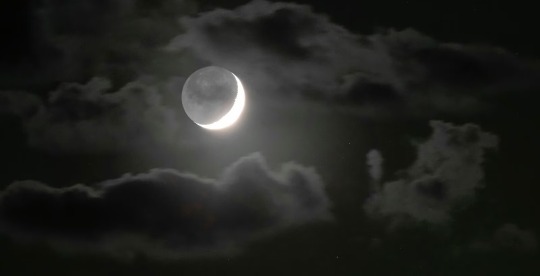
The mystery starts with the solar wind, a stream of charged particles that flows out from the Sun, bombarding Earth and the Moon with hydrogen. Hydrogen makes it harder for hematite to form. It's what is known as a reducer, meaning it adds electrons to the materials it interacts with. That's the opposite of what is needed to make hematite: For iron to rust, it requires an oxidizer, which removes electrons. And while the Earth has a magnetic field shielding it from this hydrogen, the Moon does not.
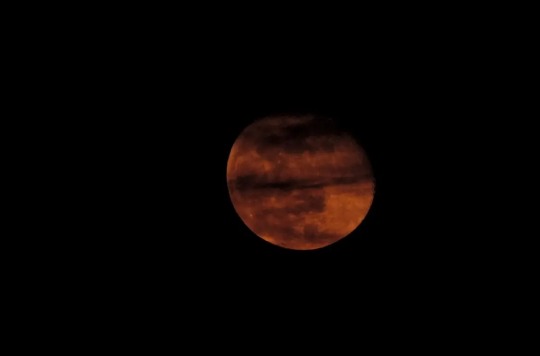
"It's very puzzling," Li said. "The Moon is a terrible environment for hematite to form in." So he turned to JPL scientists Abigail Fraeman and Vivian Sun to help poke at M3's data and confirm his discovery of hematite.
"At first, I totally didn't believe it. It shouldn't exist based on the conditions present on the Moon," Fraeman said. "But since we discovered water on the Moon, people have been speculating that there could be a greater variety of minerals than we realize if that water had reacted with rocks."
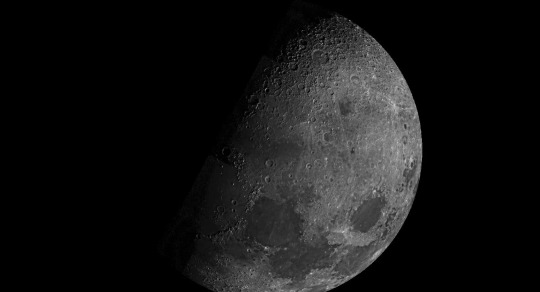
After taking a close look, Fraeman and Sun became convinced M3's data does indeed indicate the presence of hematite at the lunar poles. "In the end, the spectra were convincingly hematite-bearing, and there needed to be an explanation for why it's on the Moon," Sun said.
Their paper offers a three-pronged model to explain how rust might form in such an environment. For starters, while the Moon lacks an atmosphere, it is in fact home to trace amounts of oxygen.

The source of that oxygen: our planet. Earth's magnetic field trails behind the planet like a windsock. In 2007, Japan's Kaguya orbiter discovered that oxygen from Earth's upper atmosphere can hitch a ride on this trailing magnetotail, as it's officially known, traveling the 239,000 miles (385,00 kilometers) to the Moon.

That discovery fits with data from M3, which found more hematite on the Moon's Earth-facing near side than on its far side. "This suggested that Earth's oxygen could be driving the formation of hematite," Li said. The Moon has been inching away from Earth for billions of years, so it's also possible that more oxygen hopped across this rift when the two were closer in the ancient past.

Then there's the matter of all that hydrogen being delivered by the solar wind. As a reducer, hydrogen should prevent oxidation from occurring. But Earth's magnetotail has a mediating effect. Besides ferrying oxygen to the Moon from our home planet, it also blocks over 99% of the solar wind during certain periods of the Moon's orbit (specifically, whenever it's in the full Moon phase). That opens occasional windows during the lunar cycle when rust can form.
Originally published on nasa.com
COMING UP!!
(Saturday, October 21st, 2023)
"HOW CLOSE ARE WE TO SPACE COLONIZATION??"
#astronomy#outer space#alternate universe#astrophysics#universe#spacecraft#white universe#space#parallel universe#astrophotography#moon mars#rusty moon
138 notes
·
View notes
Text
Indian Space Research Organization Invites Applications For Library Assistant'A' Recruitment
0 notes
Link
5 min read Laser Instrument on NASA’s LRO Successfully ‘Pings’ Indian Moon Lander For the first time at the Moon, a laser beam was transmitted and reflected between an orbiting NASA spacecraft and an Oreo-sized device on ISRO’s (Indian Space Research Organisation) Vikram lander on the lunar surface. The successful experiment opens the door to a new style of precisely locating targets on the Moon’s surface. At 3 p.m. EST on Dec. 12, 2023, NASA’s LRO (Lunar Reconnaissance Orbiter) pointed its laser altimeter instrument toward Vikram. The lander was 62 miles, or 100 kilometers, away from LRO, near Manzinus crater in the Moon’s South Pole region, when LRO transmitted laser pulses toward it. After the orbiter registered light that had bounced back from a tiny NASA retroreflector aboard Vikram, NASA scientists knew their technique had finally worked. ISRO’s (Indian Space Research Organization) Vikram lander, with a NASA retroreflector on it, touched down on the Moon on Aug. 23, 2023. The camera aboard NASA’s LRO (Lunar Reconnaissance Orbiter) took this picture four days later. The lander is in the center of the image, its dark shadow visible against the bright halo around it. The halo formed after rocket plume interacted with the fine-grained regolith (similar to soil) on the Moon’s surface. The image shows an area that’s 1 mile, or 1.7 kilometers, wide. NASA’s Goddard Space Flight Center/Arizona State University Sending laser pulses toward an object and measuring how long it takes the light to bounce back is a commonly used way to track the locations of Earth-orbiting satellites from the ground. But using the technique in reverse – to send laser pulses from a moving spacecraft to a stationary one to determine its precise location – has many applications at the Moon, scientists say. “We’ve showed that we can locate our retroreflector on the surface from the Moon’s orbit,” said Xiaoli Sun, who led the team at NASA’s Goddard Space Flight Center in Greenbelt, Maryland, that developed the retroreflector on Vikram as part of a partnership between NASA and ISRO. “The next step is to improve the technique so that it can become routine for missions that want to use these retroreflectors in the future.” Only 2 inches, or 5 centimeters, wide, NASA’s tiny but mighty retroreflector, called a Laser Retroreflector Array, has eight quartz-corner-cube prisms set into a dome-shaped aluminum frame. The device is simple and durable, scientists say, requiring neither power nor maintenance, and can last for decades. Its configuration allows the retroreflector to reflect light coming in from any direction back to its source. Only 2 inches, or 5 centimeters, wide, NASA’s Laser Retroreflector Array has eight quartz-corner-cube prisms set into a dome-shaped aluminum frame. This configuration allows the device to reflect light coming in from any direction back to its source. NASA’s Goddard Space Flight Center Retroreflectors can be used for many applications in science and exploration and, indeed, have been in use at the Moon since the Apollo era. By reflecting light back to Earth, the suitcase-size retroreflectors revealed that the Moon is moving away from our planet at a rate of 1.5 inches (3.8 centimeters) per year. This new generation of tiny retroreflectors has even more applications than their larger predecessors. On the International Space Station, they’re used as precision markers that help cargo-delivery spacecraft dock autonomously. In the future, they could guide Artemis astronauts to the surface in the dark, for example, or mark the locations of spacecraft already on the surface, helping astronauts or uncrewed spacecraft land next to them. But there’s more work to do before retroreflectors can light up the Moon. The biggest hurdle to their immediate adoption is that LRO’s altimeter, which has operated for 13 years beyond its primary mission, is the only laser instrument orbiting the Moon for now. But the instrument wasn’t designed to pinpoint a target; since 2009, the altimeter – called LOLA – has been responsible for mapping the Moon’s topography to prepare for missions to the surface. “We would like LOLA to point to this Oreo-sized target and hit it every time, which is hard,” said Daniel Cremons, a NASA Goddard scientist who works with Sun. It took the altimeter eight tries to contact Vikram’s retroreflector. LOLA works by dispatching five laser beams toward the Moon and measuring how long it takes each one to bounce back (the quicker the light returns, the less distance between LOLA and the surface, and thus the higher the elevation in that area). Each laser beam covers an area 32 feet, or 10 meters, wide, from a 62-mile, or 100-kilometer, altitude. Because there are large gaps between the beams, there is only a small chance that the laser pulse can contact a retroreflector during each pass of the lunar orbiter over the lander. Altimeters are great for detecting craters, rocks, and boulders to create global elevation maps of the Moon. But they aren’t ideal for pointing to within one-hundredth of a degree of a retroreflector, which is what’s required to consistently achieve a ping. A future laser that slowly and continuously rakes the surface without any gaps in coverage would help tiny retroreflectors meet their potential. For now, the team behind NASA’s miniature retroreflectors will continue to use LRO’s laser altimeter to help refine the position of targets on the surface, especially landers. Several NASA retroreflectors are slated to fly aboard public and private Moon landers, including one on JAXA’s (Japan Aerospace Exploration Agency) SLIM lander, due to land on the Moon on Jan. 19, 2024, and one built by Intuitive Machines, a private company scheduled to launch its spacecraft to the Moon in mid-February. Intuitive Machines will carry six NASA payloads, including the retroreflector, under NASA’s Commercial Lunar Payload Services (CLPS) initiative. Lonnie ShekhtmanNASA’s Goddard Space Flight Center, Greenbelt, MD Media contact:Nancy Neal Jones, NASA’s Goddard Space Flight Center, Greenbelt, MD Share Details Last Updated Jan 18, 2024 Related Terms Lunar Reconnaissance Orbiter (LRO)
0 notes
Text
Small Satellite Market Fuels by Space Enterprises Revolutionization

Small satellites can weigh from 1 to 500 kg with lower power consumption and costs as compared to traditional satellites. They play an indispensable role in communication, earth observation and navigation applications. Increasing investment in developing nations for Earth Observation satellites is driving the small satellite market. Small satellites provide high-resolution imagery at lower costs for applications like agricultural monitoring, natural disaster management and urban planning. They have also found utility in providing broadband connectivity in remote areas.
The global small satellite market is estimated to be valued at US$ 4.51 Bn in 2023 and is expected to exhibit a CAGR of 4.8% over the forecast period 2023 to 2030, as highlighted in a new report published by Coherent Market Insights.
Market Dynamics
Growing demand for Earth Observation applications: Growing need for high-resolution imagery for monitoring agricultural land, natural resources, disaster management and urban development is driving demand for small satellites. Developing economies are increasingly investing in Earth Observation programs to gain insights for strategic development planning. For example, Indian Space Research Organization (ISRO) launched an Earth Observation satellite EOS-03 to study agricultural crops and natural resources.
Rising investments in communication constellations: Several companies are investing heavily in developing constellations of small satellites to provide broadband communication services globally. For instance, SpaceX plans to launch around 42,000 Starlink satellites into low Earth orbit to provide high-speed internet connectivity. Amazon has been approved to launch over 3,000 Kuiper satellites to offer broadband services. Such large constellations will majorly contribute to small satellite market growth.
SWOT Analysis
Strength: The small satellite market offers various advantages over traditional large satellites. Small satellites have a short development cycle and lower capital cost. They help reduce the risk of launch failure as multiple small satellites can be launched together.
Weakness: Reliability and performance of small satellites are still limited compared to traditional large satellites. Their small size also restricts payload and operational capabilities. Manufacturing of miniaturized components for small satellites remains technically challenging.
Opportunity: Growth in satellite-based internet services and remote sensing is driving demand for small satellites. Constellations of small satellites can provide global connectivity and Earth observation. Government investments and private funding are supporting small satellite technology development.
Threats: Traditional satellite manufacturers are entering the small satellite market with technological capabilities. Competition from new space companies and lowering launch costs pose threats. Dependency on few launch vehicle providers can impact business plans of small satellite companies.
Key Takeaways
The Global Small Satellite Market Size is expected to witness high growth over the forecast period of 2023 to 2030 driven by increasing constellations for space-based internet.
Regional analysis: North America currently dominates the small satellite market owing to presence of major players and government funding for technology development in the region. Asia Pacific is expected to be the fastest growing market due to increasing satellite launches and remote sensing projects by China, India and other emerging economies.
Key players: Key players operating in the small satellite market are One10 LLC, 360 Destination Group, CWT Meetings & Events, ITA Group, ConferenceDirect, Experient, Inc., Eventbrite, Cvent Inc, Reed Exhibitions, Informa plc, Emerald Expositions, BCD Meetings and Events, ATPI Ltd., Interpublic Group, Ruckus Marketing, LLC, Hubb, Freeman, Maritz, BI Worldwide, Conference Care Ltd. Small satellite manufacturers and newspace companies like SpaceX are also enhancing capabilities.
For More Insights, Read: https://www.newsstatix.com/small-satellite-market-trends-growth-and-regional-outlook-2023-2030/
Related Reports: https://allmeaninginhindi.com/navigating-the-evolving-landscape-of-enterprise-artificial-intelligence-solutions/
0 notes